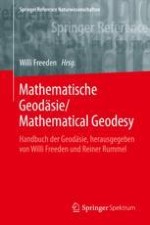2020 | OriginalPaper | Buchkapitel
15. The Numerical Treatment of Covariance Stationary Processes in Least Squares Collocation
verfasst von : Wolf-Dieter Schuh, Jan Martin Brockmann
Erschienen in: Mathematische Geodäsie/Mathematical Geodesy
Verlag: Springer Berlin Heidelberg
Aktivieren Sie unsere intelligente Suche, um passende Fachinhalte oder Patente zu finden.
Wählen Sie Textabschnitte aus um mit Künstlicher Intelligenz passenden Patente zu finden. powered by
Markieren Sie Textabschnitte, um KI-gestützt weitere passende Inhalte zu finden. powered by
